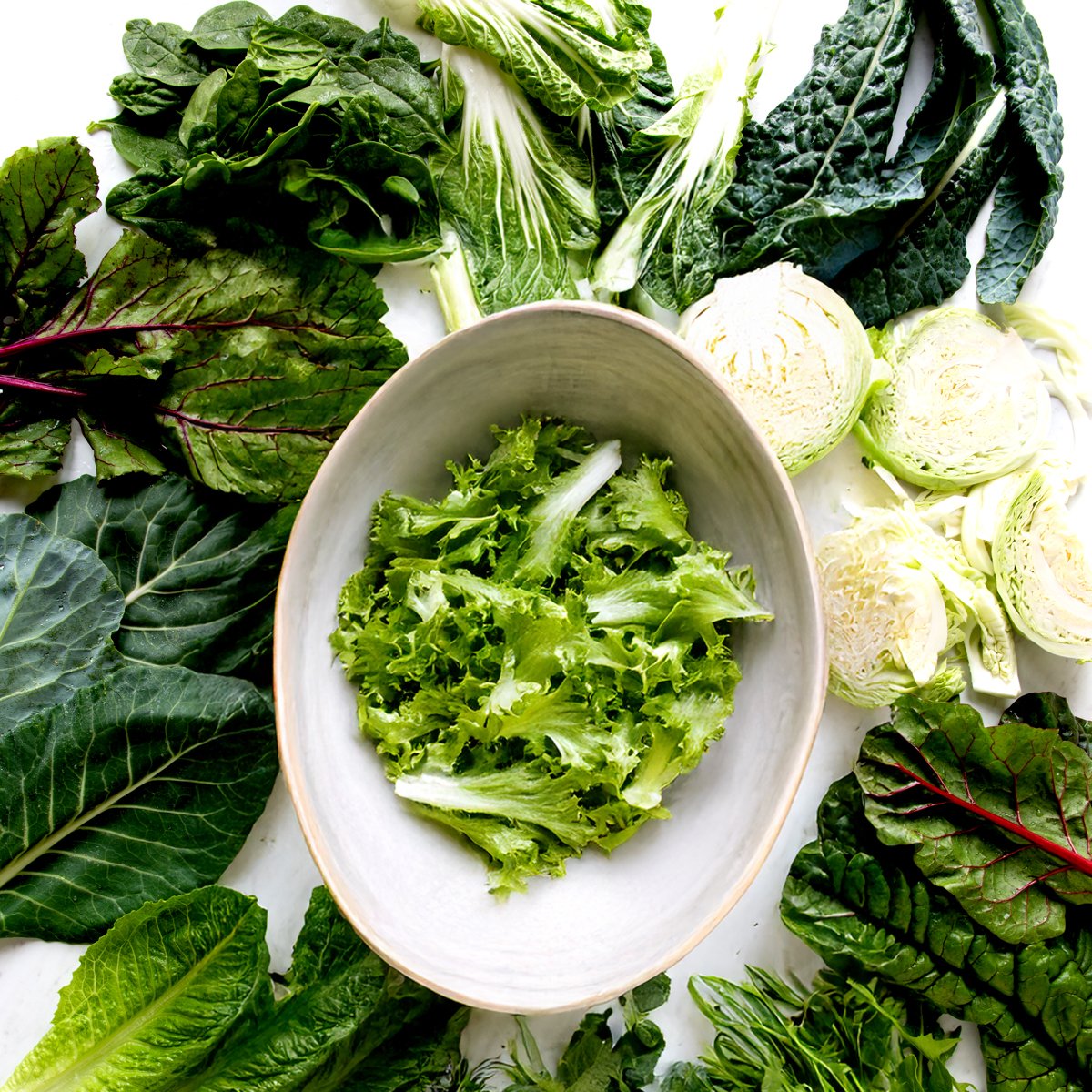
This post may contain affiliate links, meaning I can earn a small commission from items you purchase (at no cost to you).
Table of contents
Step aside salad. You’re no longer the only way to get leafy green vegetables into our diet. The following nutritional powerhouses deserve a starring role in any kitchen— not just for a trained chef. Packed with vitamins, minerals, and antioxidants, leafy greens offer a wealth of health benefits and surprising versatility in the kitchen.
I started my love affair of leafy greens with blending baby spinach into my smoothies. Over time, I started to crave more leafy green vegetables. From vibrant stir-fries to hearty plant-based soups and even delicious green smoothies, it’s time to look beyond the bowl and discover the exciting world of cooking and blending with leafy greens.
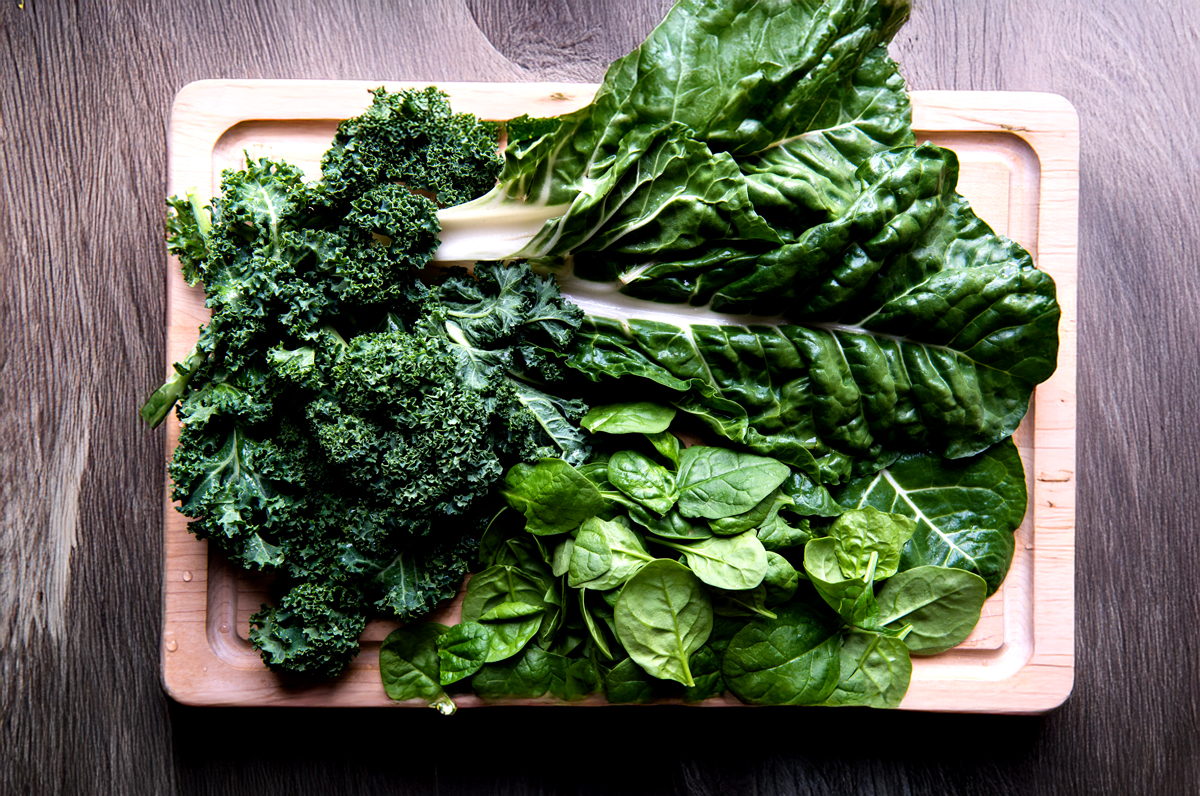
Health Benefits of Leafy Green Vegetables
Leafy greens are super important for a healthy diet. They’re nutrient-dense, green veggies that provide tons of vitamins and minerals. According to a report in the journal Neurology, a daily serving of leafy greens can lead to slower age-related cognitive decline. The term “leafy greens” encompasses a wide array of edible leaves, each with its unique flavor profile and texture. Getting familiar with the leafy green varieties is the first step to unlocking their culinary potential.
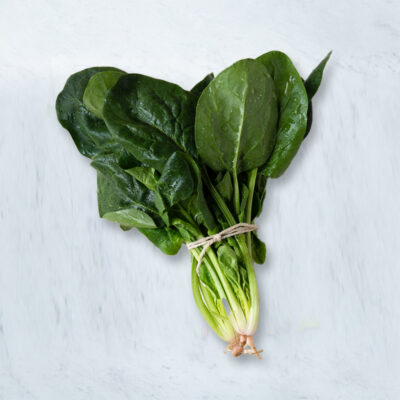
Spinach
Mild & slightly sweet
Spinach is a nutritional powerhouse, packed with vital vitamins (K, A, C), folate, and iron, crucial for bone health, vision, immunity, cell growth, and red blood cell production. Its high antioxidant content and plant compounds may also lower the risk of chronic diseases, making it a valuable addition to a healthy diet.
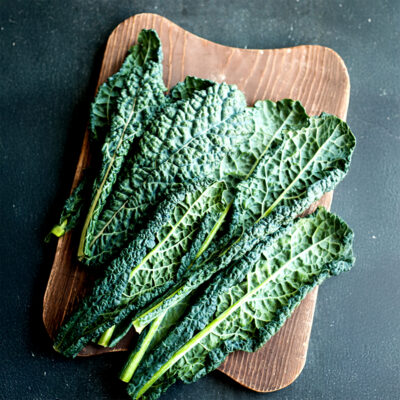
Kale
Hearty & slightly bitter
Kale has different varieties like curly kale, Lacinato (dinosaur) kale, and baby kale offer varying textures. With 684% of the recommended daily value of vitamin K, 206% of the RDV of vitamin A and 134% of the RDV of vitamin C, this dark leafy green packs a health punch.
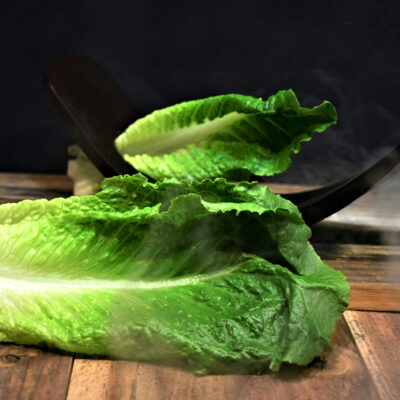
Lettuce (Romaine, Butter, Iceberg)
Mild & slightly sweet
Primarily used raw for salads and wraps, some firmer varieties like romaine can be lightly grilled or braised. Romaine lettuce is high in fiber and low in calories. The vitamin C and beta-carotene content help to lower cholesterol and prevent build-up on artery walls, which reduces the risk of a heart attack.
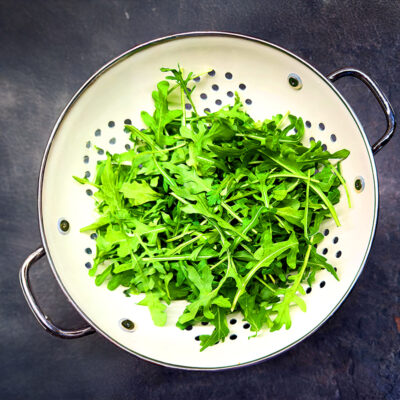
Arugula (Rocket)
Peppery & slightly bitter
Arugula adds a zesty kick to salads and cooked dishes. More than just a garnish, one cup of this leafy green contains 27.7% of the RDV of vitamin K. Tastes best on top of pizza, in a salad or sandwich. I don’t recommend making smoothies with it.
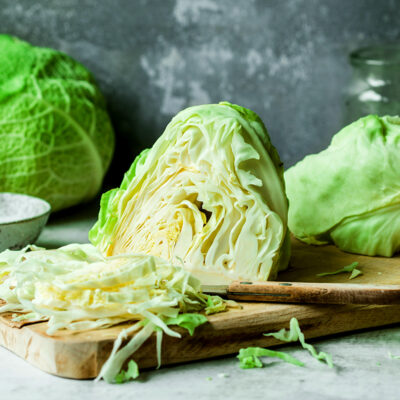
Cabbage
Hearty & pungent
This leafy green can actually be purple, red, white or green, but is definitely still considered a leafy green. I love using cabbage as a plant-based taco shell, blended in a cabbage smoothie or roasted cabbage with light seasoning. Loaded with fiber, folate, vitamin B6 and antioxidants which help fight inflammation.
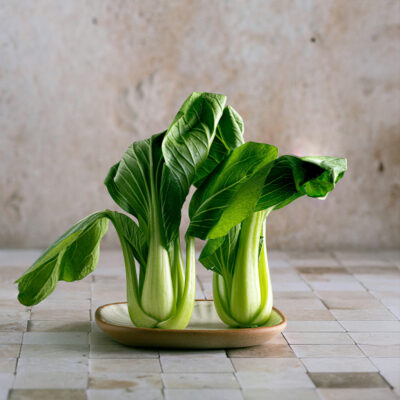
Bok Choy
Mild & slightly sweet
Bok choy is excellent stir-fried, steamed, or added to soups. Full of vitamins A and C, bok choy ranks high for nutrient density as well. All parts of the plant can be used: shredded in a salad, my vegetarian ramen, cooked in soup or blended in a smoothie.

Carrot Greens
Herbaceous & slightly bitter
Carrot tops offer surprising nutrition, providing vitamin K for blood clotting and bones, vitamin C for immunity, and potassium for blood pressure regulation. Their phytonutrients also offer potential anti-inflammatory and antioxidant benefits, making them a worthwhile to smoothies or even pesto!
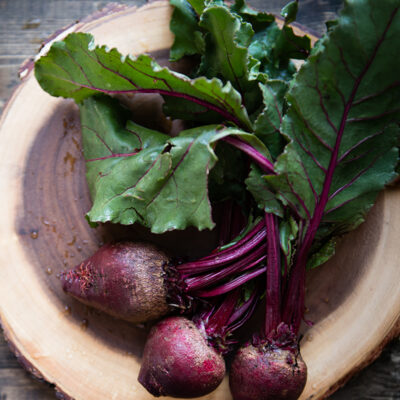
Beet Greens
Slightly earthy
Beet tops are a nutritious leafy green, rich in vitamins K and A, vital for blood clotting, bone health, vision, and immunity. High in phytonutrients, including betalains, beet greens have anti-inflammatory benefits. When blending smoothies with beets, wash and blend in the beet greens.

Collard Greens
Tough & slightly bitter
Collard greens benefit from long cooking times. Like their other cruciferous family members, collard greens are great cancer fighters. They are also pretty good at helping your body digest foods properly with all the fiber inside. They are most popular steamed, but adding them raw to your smoothies will provide greater health benefits.
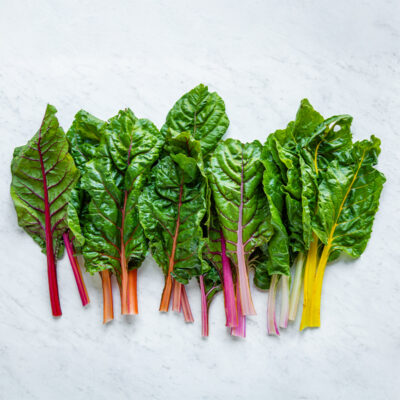
Swiss Chard
Mild & slightly earthy
Mild and slightly earthy with colorful stems that are also edible, Swiss chard is a beautiful and nutritious addition to many dishes. Chard is a colorful, dark leaf known for its ability to regulate the body’s blood sugar. Translation? If diabetes or maintaining blood sugar levels is a concern, add this veggie to your regular rotation.
Leafy Greens Recipes
5 Ways to Use Leafy Greens
Ready to move beyond the traditional salad? Here are some inspiring ways to incorporate more leafy greens into your daily meals:
- Sautéed and stir-fried: Spinach, baby kale, and Swiss chard wilt beautifully in a hot pan with a little olive oil, garlic, and a pinch of salt and pepper. A squeeze of lemon adds brightness. Heartier greens like kale, mustard greens, and bok choy hold up well in stir-fries. Add them towards the end of cooking to maintain some texture and vibrant color. Pair them with your favorite proteins, vegetables, and sauces.
- Soups for warmth and nutrition: Stir in chopped spinach, kale, or Swiss chard during the last few minutes of cooking vegetable soup recipes. They will wilt down and add a boost of nutrients and a touch of freshness. Blend cooked greens like spinach or kale with broth, sautéed onions, and a touch of cream or coconut milk for a smooth and nutritious soup.
- Baked delights with a green twist: Incorporate chopped leafy greens into egg-based dishes like quiches and frittatas. They add color, flavor, and valuable nutrients. Layer sautéed greens into pasta bakes and lasagnas for an extra dose of vegetables. They blend seamlessly with the other ingredients. Add finely chopped cooked greens to roasted root vegetables, or use them as a filling for savory pastries and dumplings.
- Blended goodness in smoothies: Don’t be afraid to toss a handful of spinach or kale into your breakfast smoothie. The flavor is surprisingly mild when combined with fruits, yogurt, and other ingredients.
- Creative raw preparations: While not technically a recipe, juicing leafy greens is a great way to consume a concentrated amount of nutrients. Blend arugula, spinach, or kale with nuts, garlic, olive oil, and lemon juice for a vibrant and flavorful pesto. You can also layer large lettuce leaves like romaine or butter lettuce to create healthy and delicious lettuce wraps and sandwiches.
Benefits of Rotating Leafy Greens
I often talk about rotating your greens when making green smoothies. This is because leafy greens come from all different plant families, each offering different health benefits. Yet if spinach is your jam, no worries! Keep doing that. You can always have a salad with kale or make a soup with Swiss chard.
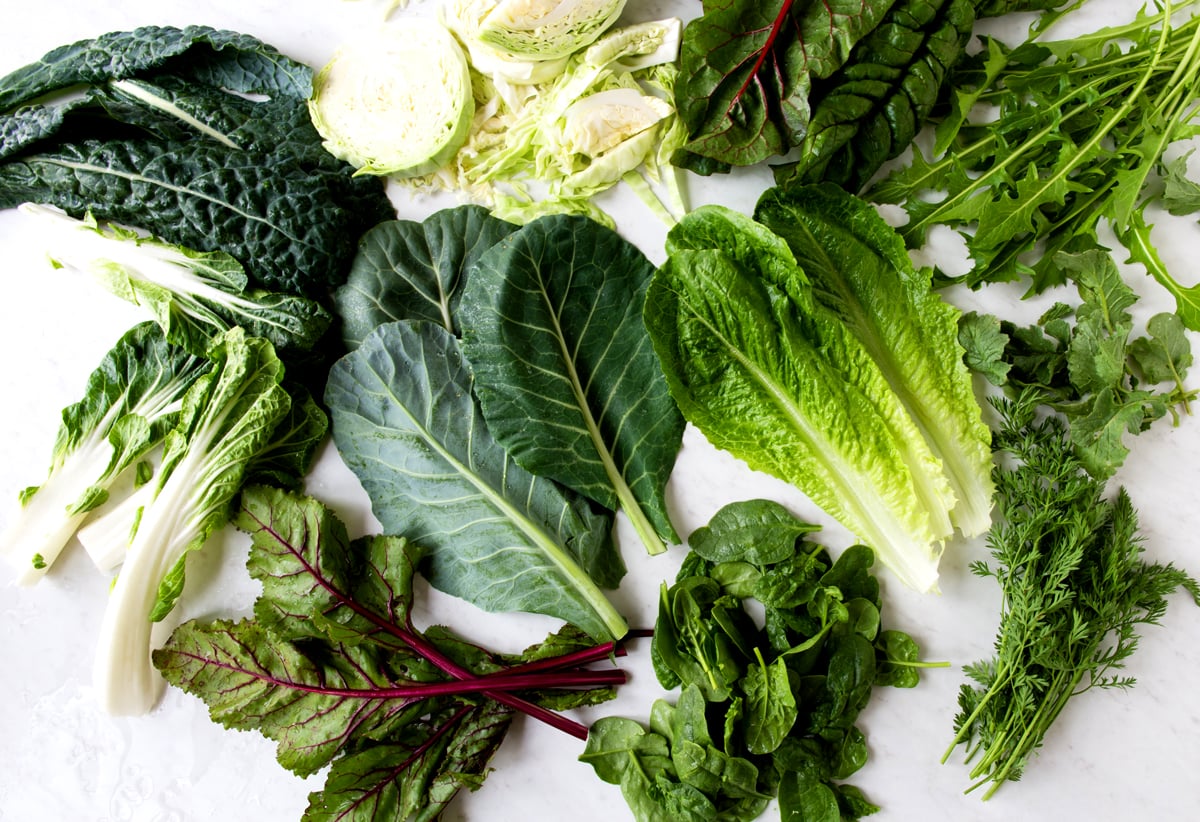
Tips for Cooking with Leafy Green Vegetables
Leafy greens are more than just a salad component. Their versatility and nutritional benefits make them a valuable addition to any healthy diet. By exploring different cooking methods and incorporating them into a variety of dishes, you can unlock a world of flavor and boost your well-being. So, step away from the salad bowl and embrace the green revolution in your kitchen!
- Experiment! Don’t be afraid to try different combinations and cooking methods to discover your favorite ways to enjoy leafy greens.
- Wash thoroughly: Always wash leafy greens thoroughly under cold running water to remove any dirt or grit. A salad spinner can be helpful for drying them.
- Remove tough stems: For heartier greens like kale and collards, remove the tough central stems before cooking.
- Don’t overcook: Most leafy greens cook quickly. Overcooking can make them mushy and reduce their nutritional value.
- Balance flavors: The bitterness of some greens can be balanced with acidic ingredients like lemon juice or vinegar, or by pairing them with sweeter or richer flavors.
What are your favorite leafy greens? Drop a comment below and let me know if this list has inspired you to try a new ingredient, or if you’ve got a new green for me to try!
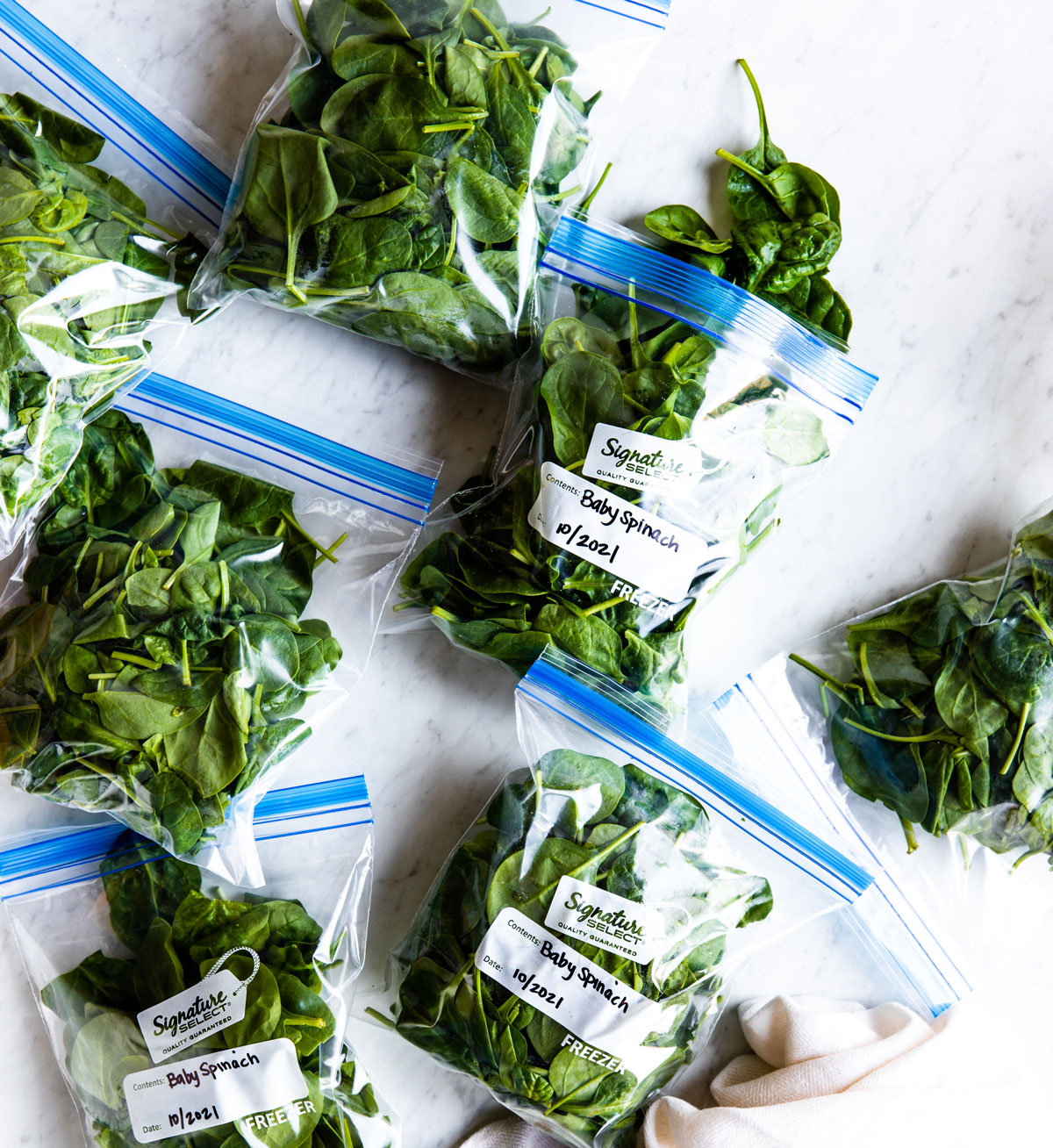
Freezing Your Leafy Greens
Ever wonder how to use up all the beautiful leafy greens you just bought, before they start to wilt? Even though I make green smoothies daily, I sometimes need to freeze my spinach or kale to stay fresh longer.
To lengthen the shelf life of leafy greens and make rotating your greens as easy as opening your freezer, try freezing your spinach. I buy spinach and power greens at Costco— freezing half of it maximizes the freshness.
Common Questions
You’ve probably heard of spinach, kale and lettuce, but leafy greens also include carrot tops, beet greens, swiss chard, arugula and more! They can grow all on their own, or be found on the tops of other plants (like broccoli, beets and carrots).
All leafy greens are incredibly nutritious and great to mix into your diet. Kale and spinach are probably the most nutrient-dense, yet you need a variety of greens (and other fruits and vegetables) for the best health. Don’t be afraid to give a new one a try next time you’re at the store. You might be surprised by mustard greens, bok choy and more!
Greens don’t just take place in salads or garnishes for burgers. You can use them in green smoothies, all kinds of pesto, filling for stuffed mushrooms or potatoes. Pretty much anything you want! Next time you are grocery shopping, grab a new-to-you leafy green and get adventurous with how you prepare it.

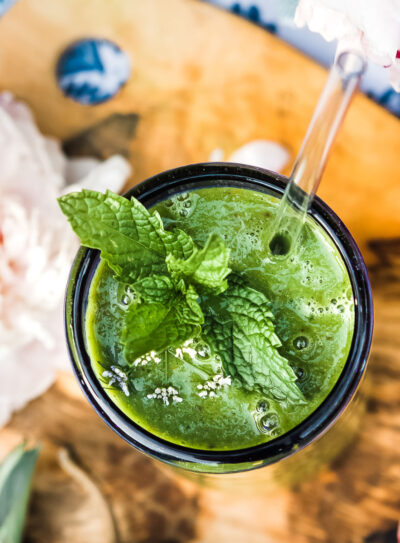
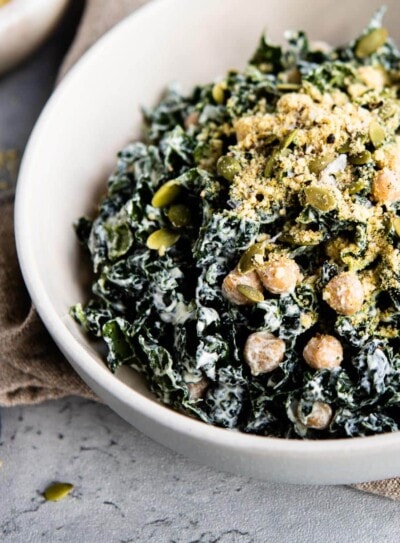

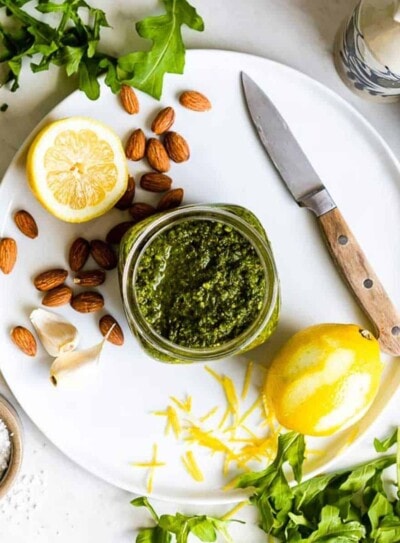
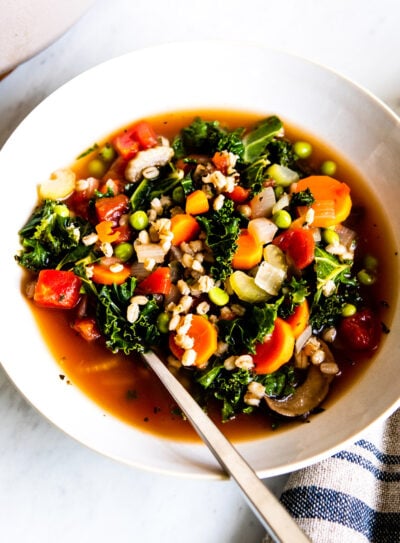

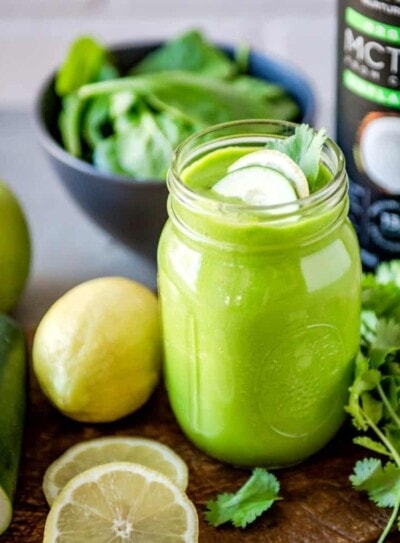
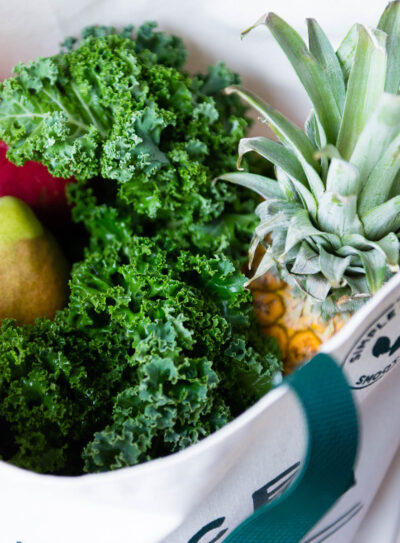

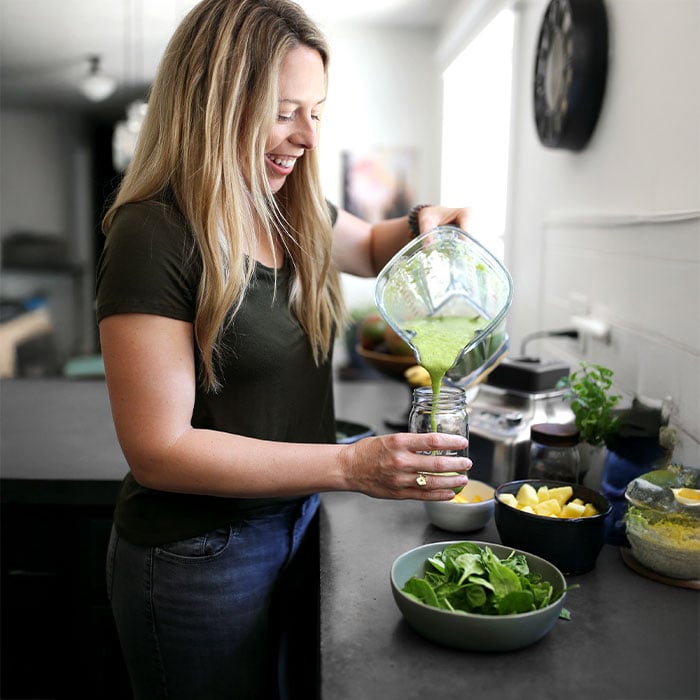
I found a packaged organic mix with baby kale, beet tops, spinach and a couple of other greens and I’ve been using that for my smoothies. Is that ok or do you recommend a different green each week?
Oh that sounds delicious!
Hi Sophie,
We love using a variety of leafy greens, and that combination sounds out of this world! We do suggest continuing to rotate your greens, for example take a week off of spinach, and then the following week remove a different type of leafy green. So your body is being fueled by different nutrients and you lower your risk of oxalate buildup.
Hope this helps!
Thank you for all the information!
Very interesting : )
Hi Adanary,
You’re so welcome! Thanks for blendin’ with us! 🙂
Thank you I will definitely start switching up my greens better safe than sorry. Thanks again for the heads UP!
Hi Tanya,
You’re so welcome! We hope you found this information helpful! Please reach out with any questions!
Cheers 🙂
useful information
Happy we could help, Jenny! 🙂
Can I mix two different green families or is it better to drink one at the time?
Hi Teresa,
Definitely! We love using a mix of different leafy greens! Just make sure that you’re taking a week off from a specific leafy green family to help prevent oxalate buildup.
Cheers 🙂
Can I use the whole carrot along with the tops?
Hi Teresa,
Of course! We love that you can blend the whole carrot! Learn more about our love for carrots here…
Cheers 🙂
love this website!
I always look for some tips and recipes here;)
cheers from London! x
Thanks for blendin’ with us, Angela!
Hi. I’m new to smoothies and just found your website! I am the mind of person who does not like to experiment, when I find the one I like I want to stick with it. Wondering, would it work to mix a nice variety of greens instead of rotating greens? Or is it better to rotate?
Hi Denise,
Great question! While we love using a variety of greens, we do suggest rotating from week to week to prevent oxalate buildup and fuel your body with different nutrients.
Hi love your site my husband and I just started the green smoothie plan and although I don’t have diabetes I notice after drinking the smoothie my sugar does shoot up is this normal I really like getting up first thing in the morning and drinking a refreshing drink just don’t like the raised sugar problem thank you any ideas???
Hi Lyn,
Thanks for blendin’ with us! Concerned about the natural sugar content in our recipes? Each smoothie has 3 cups of fruit in it, and it is recommended that an adult has 1.5 to 2 cups of fruit a day. When you drink 16oz of our green smoothie recipe you will be meeting, or just under your daily intake for fruit. If you feel like that is too much fruit, feel free to do 2 cups of fruit in each smoothie with 3 cups of leafy greens. Hope that helps. 🙂
https://simplegreensmoothies.com/low-sugar-fruits
https://simplegreensmoothies.com/
You ladies are AWESOME! I’m new to smoothies but looking forward to completing the challenge. Your website contains a wealth of information and I’m taking major notes. 🙂 One of my personal goals is making a few lifestyle changes and include smoothies in my daily routine. Keep up the good work!!
Hi Vanessa,
We’re so excited to have you blendin’ with us and be part of your personal goals. Keep us updated and reach out with any questions throughout your journey!
Cheers to health, happiness, + leafy greens!
What a great website! You guys Rawk! I really love your website; so many wonderful information on nutrients. I just shared this with my sisters and friends. Love it…happy I have found you on IG
Hi Danielle,
Thanks for sharing the leafy love!! We hope you, your sisters, + friends will be joining us for our next FREE 30-Day Green Smoothie Challenge kicking off on January 1st!
https://simplegreensmoothies.com/challenge/
Cheers 🙂
Just recently started juicing and using the same veggies for 4 days and drinking a large amount in the morning 64 oz about. Well day 5 I woke up to swollen face and thought it could be from make up I stopped juicing for 3 days and had a carrot and dates juice drink at night and I woke up with a half swollen face. Was wondering if any one else experienced any same symptoms.
Hi Michellynn,
Sounds like one of your ingredients aren’t sitting well with your body. We’re green smoothie lovin’ rawkstars all right, but we’re not doctors or nutritionists. We suggest you talk with your doctor about any swelling your experiencing following juicing— I’m sure they can help you decide what is best for you and your body.
Cheers to health + happiness!
Hi there,
I came looking on here, as I have been experiencing a weird sensitivity occasionally. Usually around my legs or feet. It’s like it is just under the skin…I’m not sure if I can say tingly..just a slightly painful sensitivity. It is annoying! I have been drinking a green smoothie most days for maybe 2 years now & don’t vary it much. Does that sound like alkaloid build up to you? Also, Romaine lettuce is known as Cos lettuce in Australia (just general info). Thanks 🙂
Hi Jennifer,
While we don’t know all of your medical history, it’s hard to determine if the sensitivity you’re experiencing is related to alkaloid buildup. But it might be worth taking a few days off of green smoothies to see if your symptoms subside. If they do, try rotating your leafy greens to prevent further build-up. If you continue to experience sensitivity we suggest reaching out to your physician.
Cheers 🙂
I have been using green smoothies for 4 years and am a fit 73 Y.O. I grow my own greens in my ezygrow patio gardens. I can plant 7 varieties and have a different one each day . This has worked well for me. The last group was 2 types of kale, boc choy, Wasabe lettice, chard and a variety of asian greens. I think picking live and clean is an advantage. I do believe we should vary the type of greens we use and also use a variety of herbs for health in them. I also grow 7 types in another Ezygrow.
Hi Barry,
Thank you so much for reaching out! We love that you’re able to grow a wide variety of leafy greens!
Cheers 🙂
How about garden cress (Lepidium sativum)? Can I use this as greens?
Hi Lily,
Of course! We love trying new greens!
Best article I’ve seen on this topic. Thank you for sharing your knowledge! Any suggestions on increasing protein in smoothies without dairy? I’ve tried yogurt, but the resulting digestive distress was quite unpleasant. Have also used peanut butter, but doesn’t always go well with the other ingredients. Thanks for your help!
Hi Shelly,
Great question! We love adding plant-based protein options like chia seeds, nut butters, + hemp protein powder to our green smoothies. Learn more about our favorite protein options here…
https://simplegreensmoothies.com/plant-based-protein-powder
Shelly –
I found a Lactose free yogurt (Yami) that is delicious, creamy and doesn’t give me the gastric issues that regular or Greek yogurt do. See if you can find some at one of the healthier groceries near you!